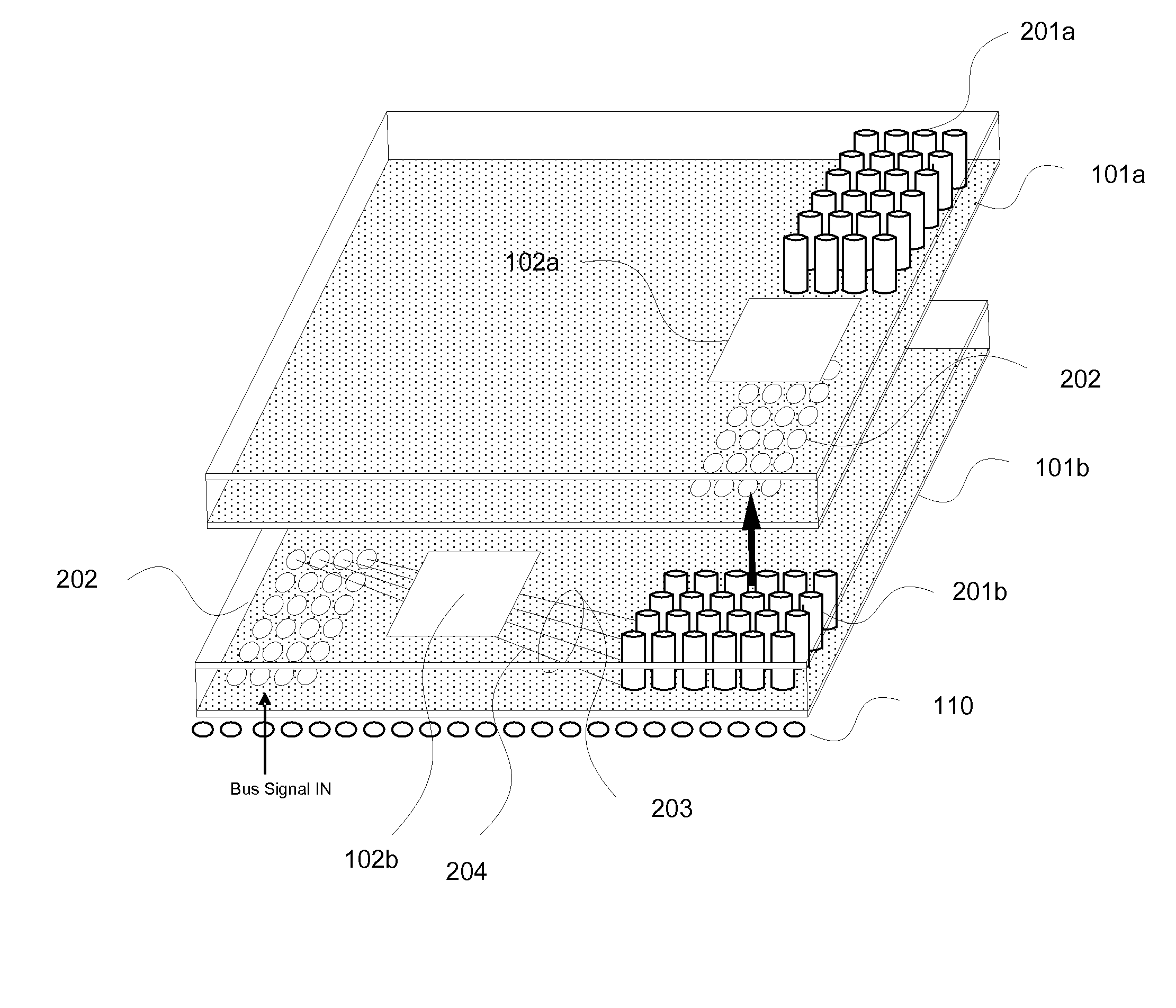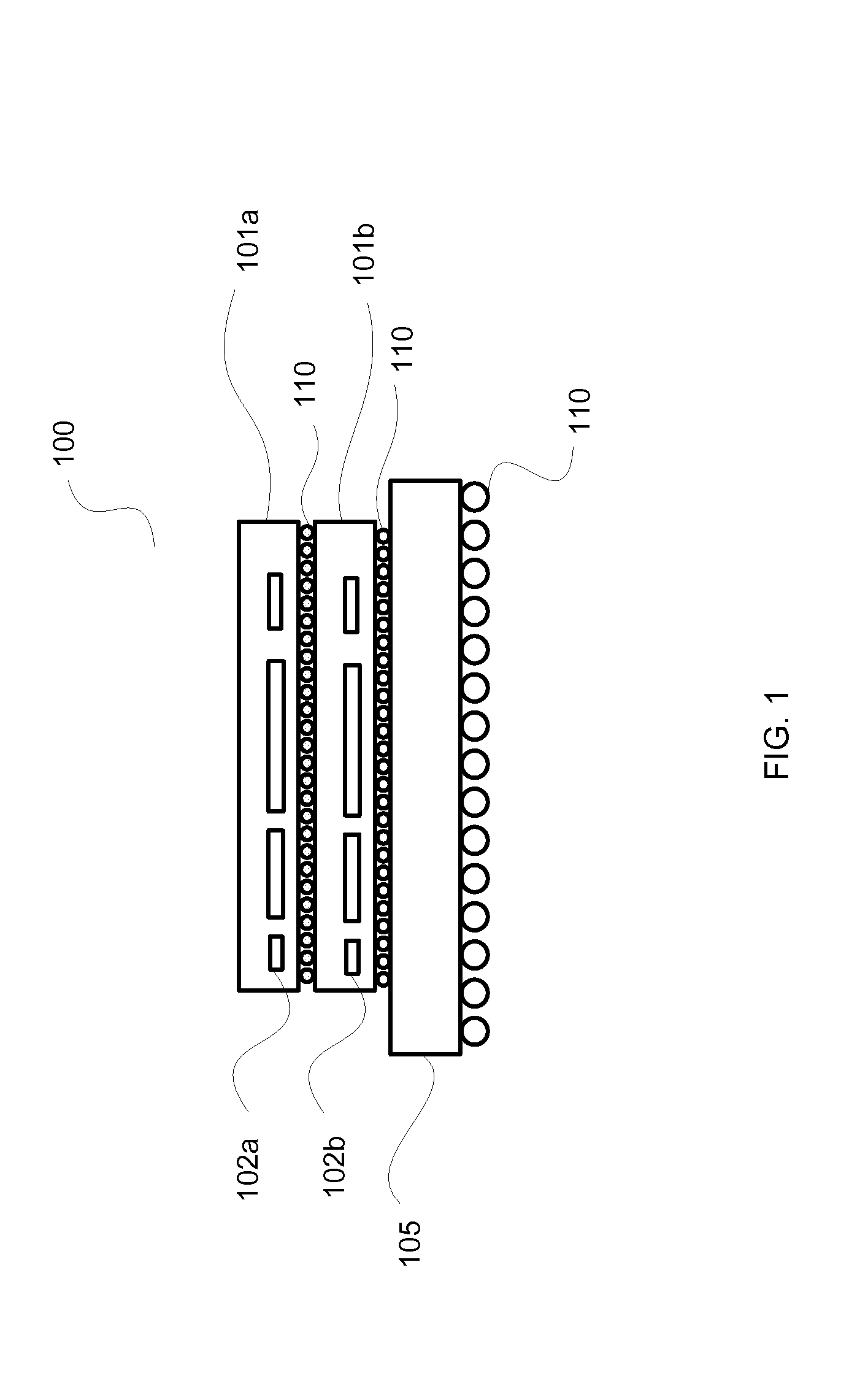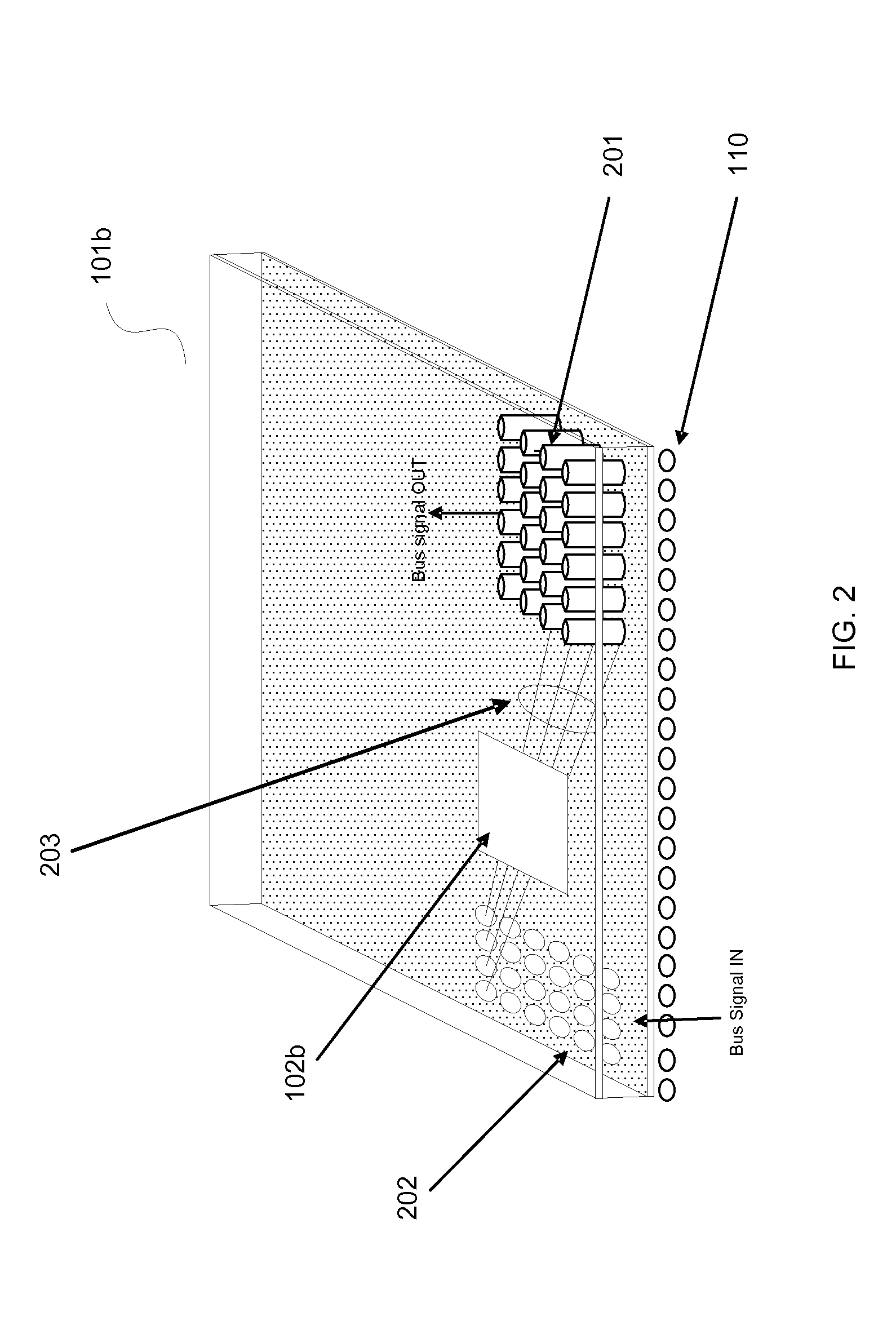System and Method for Thermal Optimized Chip Stacking
a technology of thermal optimization and stacking chips, applied in the direction of electrical equipment, semiconductor devices, semiconductor/solid-state device details, etc., can solve the problems of large number of chips creating problems with cooling, affecting the efficiency of the system, and the power dissipation density of most functions implemented in silicon is not uniform, so as to reduce the impact of hot spots and uniform power density , the effect of uniform power density
- Summary
- Abstract
- Description
- Claims
- Application Information
AI Technical Summary
Benefits of technology
Problems solved by technology
Method used
Image
Examples
Embodiment Construction
[0020]FIG. 1 illustrates a side view of an exemplary chip stack 100. Chip stack 100 includes chips 101a and 101b, package 105, and C4 connectors 110. In this exemplary figure, chips 101a and 101b sit directly above and below each other. Each of the processor cores in respective chips 101a and 101b create hot spots 102a and 102b that also sit directly above and below each other. These hotter areas, hot spots 102a and 102b, may heat each other causing an even greater temperature increase over the average in this region.
[0021]Those of ordinary skill in the art will recognize that chip stack 100 may include more than the exemplified two chips. In addition, it will be understood that each of the chips include other components such as memory 103a and 103b, memory controls 104a and 104b, and other logic components. Furthermore, it will be understood that hot spots 102a and 102b may be created by elements in the chip other than the processor cores.
[0022]FIG. 2 illustrates a perspective view...
PUM
 Login to View More
Login to View More Abstract
Description
Claims
Application Information
 Login to View More
Login to View More - R&D
- Intellectual Property
- Life Sciences
- Materials
- Tech Scout
- Unparalleled Data Quality
- Higher Quality Content
- 60% Fewer Hallucinations
Browse by: Latest US Patents, China's latest patents, Technical Efficacy Thesaurus, Application Domain, Technology Topic, Popular Technical Reports.
© 2025 PatSnap. All rights reserved.Legal|Privacy policy|Modern Slavery Act Transparency Statement|Sitemap|About US| Contact US: help@patsnap.com



